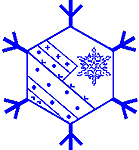 |
Jim FrankenfieldAvalanche Safety Courses and Services 1338 Foothill Dr. #170; Salt Lake City, UT 84108 |
| Choosing a Course | Qualifications | Courses | Photo Gallery | Guiding Page |
| Useful Avalanche Safety Information | ||||
Types of Spring and Summer AvalanchesOriginally prepared for the CSAC Avalanche Center. Here are descriptions of four types of avalanches which are most likely in spring and/or summer and information on what causes them and how to avoid them. Note that the defining characteristic which these types of slides all have in common is warming. In spring and summer the sun is higher and more direct, average ambient temperatures are higher, and the sun is up for a longer time than in winter. Refreezing of snow overnight due to radiational cooling may or may not help to counteract these factors. Exposure to these spring and summer avalanches can be greatly reduced by watching the weather and planning accordingly and by timing your activities early in the day. New Snow AvalanchesNew snow may create winter-like conditions at any time of year in the mountains, especially at higher elevations. During a storm the avalanche concerns may be much the same as in winter. However, the first couple of sunny days will generally cause widespread avalanching. This can be immediately after the storm or it may be later after several cooler and overcast days. If it has recently snowed but there has not yet been a few warm and sunny days be cautious. Consider avoiding avalanche terrain or postponing your plans. Should you choose to be in avalanche terrain be sure to get an early enough start to be out of such terrain before the direct sun hits it. Wet Loose Snow AvalanchesLoose snow avalanches will begin at a point and fan out as they run downslope. Ultimately they may entrain large amounts of snow and be very powerful. They may also carry a person into, through or over a terrain trap. These slides will begin to occur as the sun weakens the surface layers. This will usually be sometime after the late morning and may be in the afternoon. However, if overnight refreezing has not occurred this type of slide may occur at any hour. The most common reason for a lack of refreezing is cloud cover. Even a thin covering of clouds is enough to block the radiation which cools and refreezes the snow. As long as overnight refreezing occurs the key to avoiding these slides is time of day. By the time you are penetrating the snow to ankle depth (traveling on foot) you should be thinking about getting off of steep slopes. Skiers will want to climb early in order to get a few runs in on the much sought out "corn snow" before having to quit for the day. Climbers will want to get an alpine start in order to complete their descent early enough in the day. In either case the early start may necessitate an ice axe and crampons to ascend the still refrozen snow. Deep Wet Slab Avalanches (Climax slides)If the weather is too warm for too long the weakening of the snow bonds will occur to greater depths. In addition meltwater may lubricate buried layers and interfaces which can serve as failure plains. Rain and/or warm winds can also contribute to this process. Crown lines of resulting slides may be quite deep and even go to the ground. These slides are generally unsurvivable. Typically the weather leading up to such an avalanche cycle will be very warm for an extended time (at least a couple days) without any refreezing of the snowpack overnight. Be wary if such a warm spell occurs. These conditions usually lead to numerous large slides, not isolated events. Word generally gets around that such a cycle is underway - check with the local avalanche forecast center, ski patrol, forest ranger or warden, and local climbers and skiers. IcefallsThese occur on glaciers. Icefall events are, to a large extent, a result of glacier motion. They may become more likely well into or just following an extended warm spell during which the glacier motion increases. Their dependence on the time of day is not particularly great. Unlike snow avalanches these events are rarely human triggered. The key to avoiding them is route selection and timing - don't be in the wrong place when they happen. Icefall areas are typically obvious so try to choose a route which avoids them. Be cautious if the visibility is too poor to choose or follow a route easily. When it is necessary to cross an icefall area do so quickly. |
| |
HTML 4.01 Transitional Compliant - Validate